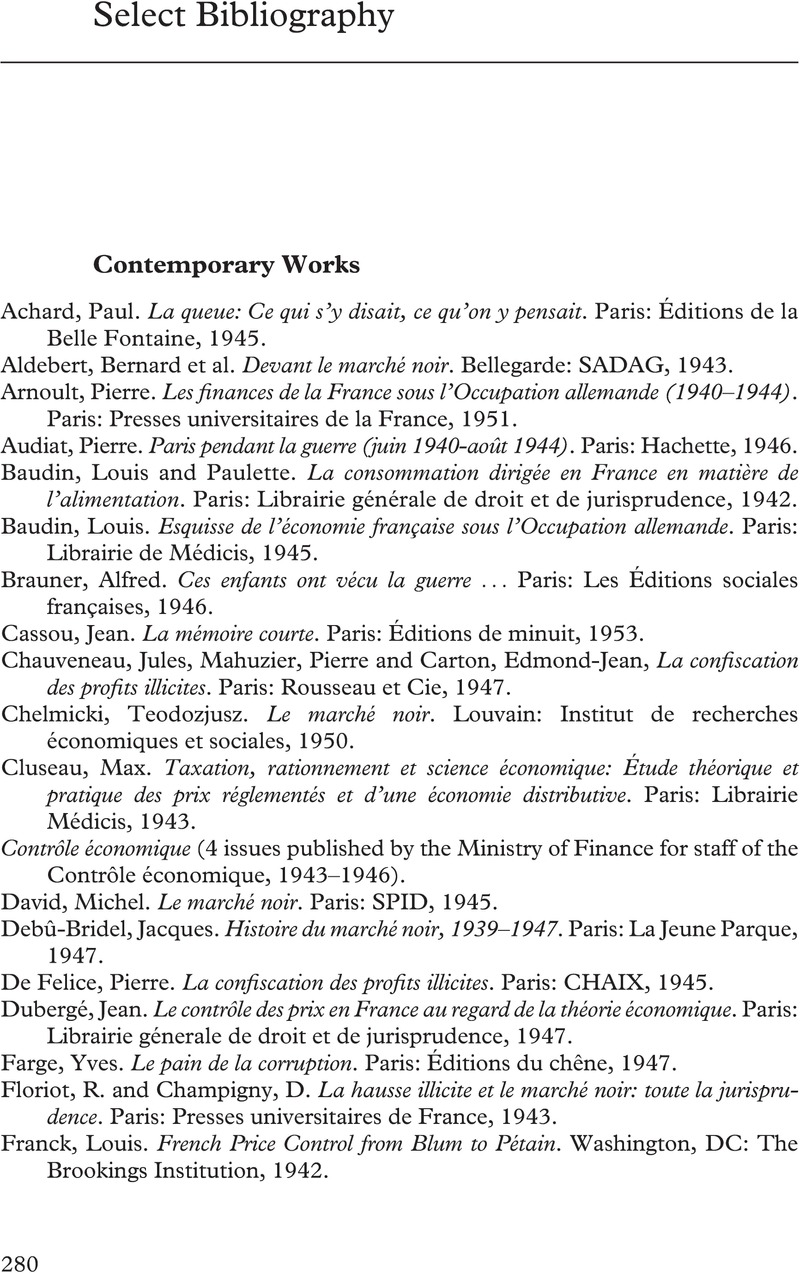Book contents
- Marché Noir
- Marché Noir
- Copyright page
- Dedication
- Contents
- Figures
- Tables
- Acknowledgments
- Abbreviations and Terms
- 1 The Black Market in Wartime France
- 2 L’économie de misère
- 3 Curing the Thermometer: Price Controls and the Black Market
- 4 La terre, elle, ne ment pas: Agriculture and the Black Market
- 5 Market Forces: Industry and Commerce
- 6 Consumers in a World of Scarce Goods
- 7 Illegality Normalized
- 8 Liberating Markets and Consumers
- 9 Justice for les profiteurs de la misère publique
- 10 Black Markets in Wartime
- Select Bibliography
- Index
- References
Select Bibliography
Published online by Cambridge University Press: 16 March 2023
- Marché Noir
- Marché Noir
- Copyright page
- Dedication
- Contents
- Figures
- Tables
- Acknowledgments
- Abbreviations and Terms
- 1 The Black Market in Wartime France
- 2 L’économie de misère
- 3 Curing the Thermometer: Price Controls and the Black Market
- 4 La terre, elle, ne ment pas: Agriculture and the Black Market
- 5 Market Forces: Industry and Commerce
- 6 Consumers in a World of Scarce Goods
- 7 Illegality Normalized
- 8 Liberating Markets and Consumers
- 9 Justice for les profiteurs de la misère publique
- 10 Black Markets in Wartime
- Select Bibliography
- Index
- References
Summary

- Type
- Chapter
- Information
- Marché NoirThe Economy of Survival in Second World War France, pp. 280 - 296Publisher: Cambridge University PressPrint publication year: 2023



